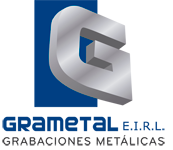Heterogeneity will be tested using the I2 statistic, which measures the proportion of variance due to inconsistency. An I2 value of 0% indicates no inconsistency between the results of individual studies. Low, medium, and high heterogeneity will be considered with I2 values of 25%, 50%, and 75%, respectively [31]. However, the emergence of resistance to NNRTIs and/or NRTIs poses a significant challenge as it reduces available alternatives for effective treatment regimens and further complicates treatment strategies [1, 9]. According to WHO recommendation, countries should consider changing first-line ART regimen if HIV drug resistance rates exceed 10% [10].
Coastal Studies Institute teaches environmental stewardship
Because drinking makes them feel good, they form an association between alcohol and pleasure. He also discovered that administering naltrexone before drinking would eventually extinguish the drinking behavior. Later research also demonstrated that naltrexone had a similar effect on humans with alcohol use disorder who wanted to drink less. Throughout the day, there will be medication time and night time is no different. Before bedtime, patients are administered any medications they are taking. If you missed a medication time, you often had to wait until the next day.
Preparing the Skin for Mohs Surgery
To ensure methodological quality, two reviewers will independently assess the quality of the included studies. We will assess risk of bias using the Joanna Briggs Institute (JBI) critical appraisal checklist, a comprehensive tool designed to assess quality and risk of bias in various types of study designs. The various biases will be evaluated using the JBI critical appraisal checklist. The questions in the checklist address selection bias by examining what are the signs of cocaine use how participants are recruited, performance bias by examining blinding methods, and detection bias by assessing the outcomes assessed. Questions related to attrition bias focus on handling incomplete data, while reporting bias is assessed by examining whether all predetermined outcomes are reported consistently. This systematic approach ensures thorough assessment of potential biases contributing to the overall robustness of the meta-analysis [28, 30].
A message from University leadership: Adapting the Student Conduct process
Usually, some services will be covered, but how much you’ll have to pay out of pocket depends on your health plan and the program you choose. It looks at your specific case and decides the type of treatment you qualify for. Outpatient, where you get some treatment during the day but live at home.
Stimuli-Responsive Liposomes of 5-Fluorouracil: Progressive Steps for Safe and Effective Treatment of Colorectal Cancer
Depending on the duration and degree of substance use, detox is advised for those who abuse alcohol, benzodiazepines and barbiturates, stimulants including cocaine and methamphetamine, and opiates such as heroin and oxycodone. Withdrawal from alcohol, benzodiazepines, and barbiturates—all central nervous system depressants—poses the risk of seizures and can be life-threatening. The acute phase is dominated by the physiological effects of the sudden stoppage, which typically includes intense substance craving. Treatment during this phase provides monitoring and symptomatic relief of the intense discomfort, and patients may benefit from the use of medication to dampen drug craving.
Behavioral Treatments
Under these rights, a patient is also protected from cruel treatment such as unnecessary restraint or seclusion. Hosted by therapist Amy Morin, LCSW, this episode of The Verywell Mind Podcast, featuring addiction specialist Erica Spiegelman, shares the skills that help in recovery. While discussing your life, your choices, and your substance use can be difficult, remember that accurate information will help the staff develop a program best suited for you and your needs. You’ll be served breakfast and afterward, attend your first session of the day, such as group therapy. You may be given a break during the session to reflect, journal, or practice any skills you learned during the session.
For people with addictions to drugs like stimulants or cannabis, no medications are currently available to assist in treatment, so treatment consists of behavioral therapies. Treatment should be tailored to address each patient’s drug use patterns and drug-related medical, mental, and social problems. Research on the science of addiction and the treatment of substance use disorders has led to the development of research-based methods that help people to stop using drugs and resume productive lives, also known as being in recovery. Staying up to date with your COVID-19 vaccinations makes you much less likely to get very ill, be hospitalized, or even die from COVID-19. Treatment can further reduce the risk for COVID-19 hospitalization and death among vaccinated people, especially those at higher risk for severe illness.
Harm reduction is saving lives, experts say, because it initiates the recovery process at whatever stage of change a person is in. Addressing this gap is critical to inform evidence-based policies and strategies to improve HIV treatment and care in Ethiopia. Therefore, the objective of this systematic review and meta-analysis will be to estimate the pooled prevalence rate of HIV drug resistance among patients experiencing treatment failure in Ethiopia. On entering detox, patients undergo evaluation including testing for the presence of substances of abuse and examination of their mental and physical condition. The evaluation typically includes a comprehensive history and assessment of the patient’s social situation.
Information provided by NIDA is not a substitute for professional medical care or legal consultation. Seeking addiction treatment is a step towards a healthier and happier life, so don’t be afraid to seek help and take the first steps toward recovery. Inpatient treatment, or residential recovery, is a full-time, intensive program for serious addictions. Data from 2020 reveals that only 13 percent of people with drug use disorders can access the treatment they urgently need.1 The only way a program can be considered effective is if people with SUD have the chance to access its services.
Telehealth can be a great way to receive care, especially for people who have a hard time getting to appointments. This is usually an option for first line treatment and for maintenance. You can search online for telehealth treatment or support specifically for mental health, drug, or alcohol issues. It is important to gauge whether the facility provides all the currently available, evidence-based methods or relies on one approach. You may want to learn if the program or provider offers medication and whether mental health issues are addressed together with alcohol treatment. Ideally, health care providers will one day be able to identify which AUD treatment is most effective for each person.
While treatment for any period of time is helpful, the National Institute on Drug Abuse (NIDA) recommends people spend at least 90 days in treatment. A physician who specializes in addiction medicine may offer help in the form of acute detoxification or by prescribing medications that reduce alcohol cravings and prevent relapse from alcohol and other drugs. People who have exhausted these options will often need to find an inpatient program. Below is a list of some of the providers who are typically involved in alcohol treatment and the type of care they may offer. Many people continue to support recovery for months or more by regularly engaging in counseling or psychotherapy and/or by participating in peer-support groups, whether in person or online.
The rehab experience will be what you make of it, possibly even fun. Groups will occupy most of your time spent in rehab, johns hopkins scientists give psychedelics the serious treatment and the afternoon is no different. Once awake, we were given some time to get ready—shower, shave, dress, etc.
- Group members, led by a therapist, discuss their progress, challenges, and experiences with addiction recovery.
- Group therapy allows patients to share their struggles, learn from each other, and give and get peer and counselor support.
- Your health care provider can help you evaluate the pros and cons of each treatment setting.
- Understanding the available treatment options—from behavioral therapies and medications to mutual-support groups—is the first step.
This editorial extracts information from systematic reviews that find rehabilitation to be effective, to discover the key features and to develop an empirical definition. Approved medications for alcohol use disorder and tobacco use disorder are magic mushroom side effects also available. Peer recovery supportThere are many support groups available—based on the type of issue you’re dealing with. They’re most often used for supporting recovery and allow you to connect with people who have similar experiences.
During these sessions, you’ll take an honest look at yourself, your addiction, and the effect your addiction has had on your life. Your therapist will also help you identify your addicition triggers. Once you’ve identified them, the therapist will teach you how to cope with them in a constructive way. When you first arrive at a rehab program, staff members will often start by having you complete an intake interview to find out more about you.
The danger of relapse is considered most intense during the first 90 days of recovery. Residential care may be of most value to those with an unstable or unhealthy home environment. Patients can be readily observed and monitored, an advantage for the early stages of medication management, if used.
This article discusses how the Sinclair Method for alcohol addiction recovery works, the potential pros and cons, and some things you should consider before deciding if this approach is right for you. Obviously, your belongings and person will be checked for drugs and drug paraphernalia before being admitted. Even though it doesn’t seem fair, anything that their rehab admittance team deems to be dangerous or potentially used for drugs will be confiscated. There are in-house living programs that can even last 6 months or more. Parkinson’s disease made daily activities a struggle for John, but a targeted treatment program improved his movement and speech. If you have any of the above conditions, but your symptoms are controlled well with medication or inhalers and your provider has cleared you to exercise, it is safe for you to participate.

